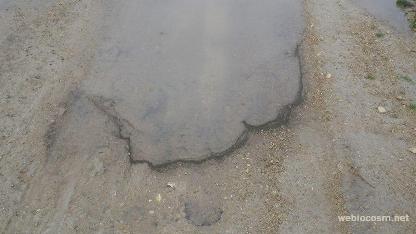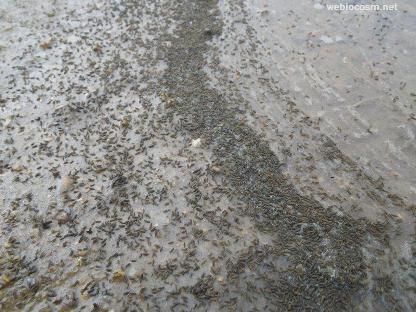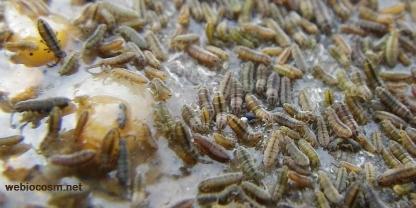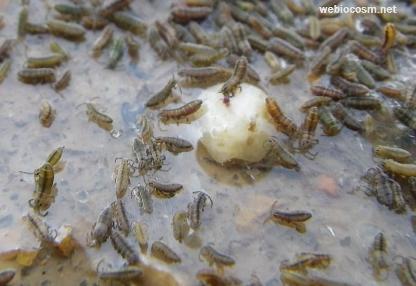Springtails in a Mud Puddle - Collembola
Springtails are hexapods that were previously considered by most to be insects that have now been reclassified by many as having a separate lineage from the insects. Springtails (Collembola) have been classified as an order within the class insecta, or as a subclass of Entognatha alongside insects in the subphylum hexapoda, or if considered to be a basal lineage of hexapoda then they are elevated to a class.
Springtails are small, usually less than 6mm, with these shown being 1-2 mm and are very abundant. Many species are known to be agricultural pests in some cases but beneficial in others.
The name springtail is derived from their spring-like abdominal appendage, the furcula, which is tucked underneath the body and held in place by small appendage called a tenaculum (or retinaculum). When threatened, the springtail rapidly and forcefully extends the appendage, forcing it into the air making it very difficult to catch for closer observation or as a quick meal. Shown below is a video I made of these tiny creatures using my iPhone 4S and olloclip macro lens(both are awesome). You can see the tails extending rapidly, but even under my microscope, I haven't clearly identified the tenaculum which is supposed to hold the furcula in place while tucked under the body. **these creatures had not been harmed or injured when I made this video, they just could not handle the smooth texture of the surface on which they were placed. I quickly released them back to nature after the video was made.** Sources Wikipedia - Springtail and bugguide.net
Don't forget to check out Modulator's Friday Ark!!!
Labels: biology, Circus of the Spineless, collembola, evolution, Friday Ark, insect, photography, springtail, wildlife, zoology














1 Comments:
Hi Henry, I found this post from the awesome youtube video you posted of these collembola. I'm actually a graduate student studying soil ecology, and I'm trying to start a project researching these little guys. As you can imagine, I've struggled to pick them up and move them from container to container. Do you have any tips for handling them? How did you get them from the puddle to the surface you filmed them on, and what was the slippery surface made of? If you want to email me about this, it's abq34 (at) wildcats (dot) unh (dot) edu. Thanks! Amanda.
Post a Comment
<< Home